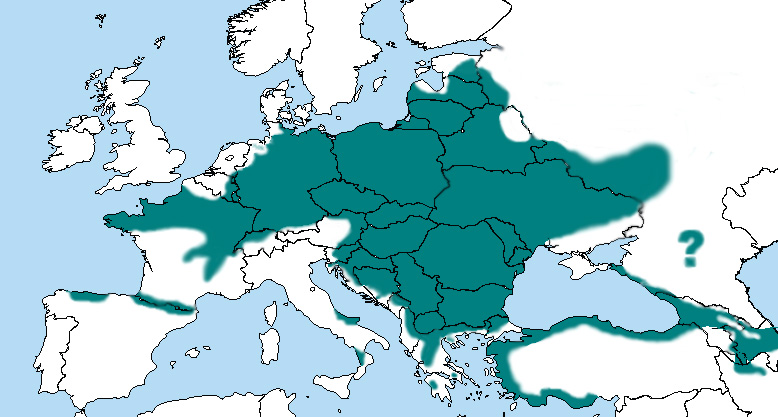
Weights and measures
| Length | from 20 to 22 cm |
|---|
State of endangerment
| Non Endangered |
Animal description
The Middle Spotted Woodpecker (Dendrocopos medius) is a captivating bird species that belongs to the Picidae family, renowned for its distinct appearance and behavior. This medium-sized woodpecker is primarily found across Europe and parts of Asia, thriving in deciduous forests rich in oak trees. Its habitat preference includes old woodlands with a high density of deadwood, which provides ample foraging opportunities and nesting sites.Characteristically, the Middle Spotted Woodpecker boasts a length of approximately 20-22 cm, making it slightly smaller than the Great Spotted Woodpecker but larger than its Lesser Spotted counterpart. One of its most distinguishing features is its plumage. The bird exhibits a striking combination of colors, with a white underside speckled with black and a reddish vent area that adds a splash of color. Its back is predominantly black with white spots and bars, creating a unique pattern that camouflages it against the bark of trees.
The head of the Middle Spotted Woodpecker is adorned with a red crown, which is present in both males and females, making it challenging to distinguish between the sexes based solely on this feature. However, juveniles can be identified by their red crown with black or dark brown edges. The species also has a distinctive black line running from the beak, through the eyes, to the sides of the neck, which contrasts sharply with the white cheeks and throat.
Vocally, the Middle Spotted Woodpecker is known for its range of sounds that include drumming on tree trunks, a method used for communication and territory marking. Its call is a sharp "kik" sound, which can be heard throughout its habitat, especially during the breeding season.
Dietarily, this woodpecker feeds primarily on insects and their larvae, which it skillfully extracts from tree bark and branches using its strong, chisel-like beak. It occasionally consumes fruits, seeds, and sap, demonstrating a degree of dietary flexibility.
Breeding season for the Middle Spotted Woodpecker typically begins in late April or May. The bird is monogamous, with pairs forming strong bonds. Nests are excavated in the trunks of old trees, where the female lays a clutch of 4-7 eggs. Both parents share the responsibility of incubating the eggs and feeding the chicks until they are ready to fledge.
Conservation-wise, the Middle Spotted Woodpecker faces challenges from habitat loss due to deforestation and the management of forests, which reduces the availability of old trees essential for nesting and foraging. While not currently listed as endangered, its population trends necessitate careful monitoring to ensure that this species continues to thrive in its natural habitat.
In summary, the Middle Spotted Woodpecker is a remarkable bird with a distinctive appearance and fascinating behaviors, making it a subject of interest for birdwatchers and conservationists alike. Its presence in Europe and Asia's woodlands underscores the importance of preserving natural habitats for the survival of this and many other species.
Map of occurrence

Similar Animals
New photos of animals
Top 10 animals
- Dolphin gull (Leucophaeus scoresbii)
- Diana monkey (Cercopithecus diana)
- Moustached guenon (Cercopithecus cephus)
- Greek tortoise (Testudo graeca)
- Stone loach (Barbatula barbatula)
- Galápagos tortoise (Geochelone nigra complex)
- Japanese macaque (Macaca fuscata)
- Russian tortoise (Testudo horsfieldii)
- Common flying dragon (Draco volans)
- Galápagos penguin (Spheniscus mendiculus)


